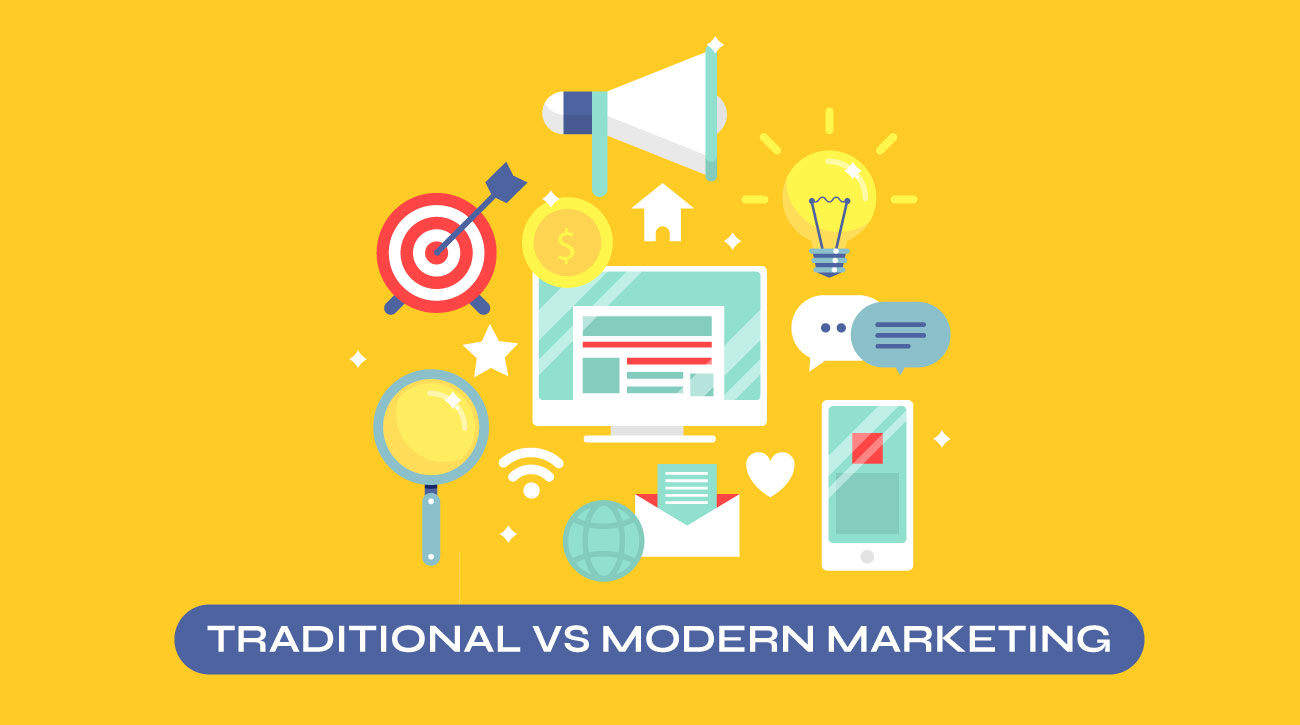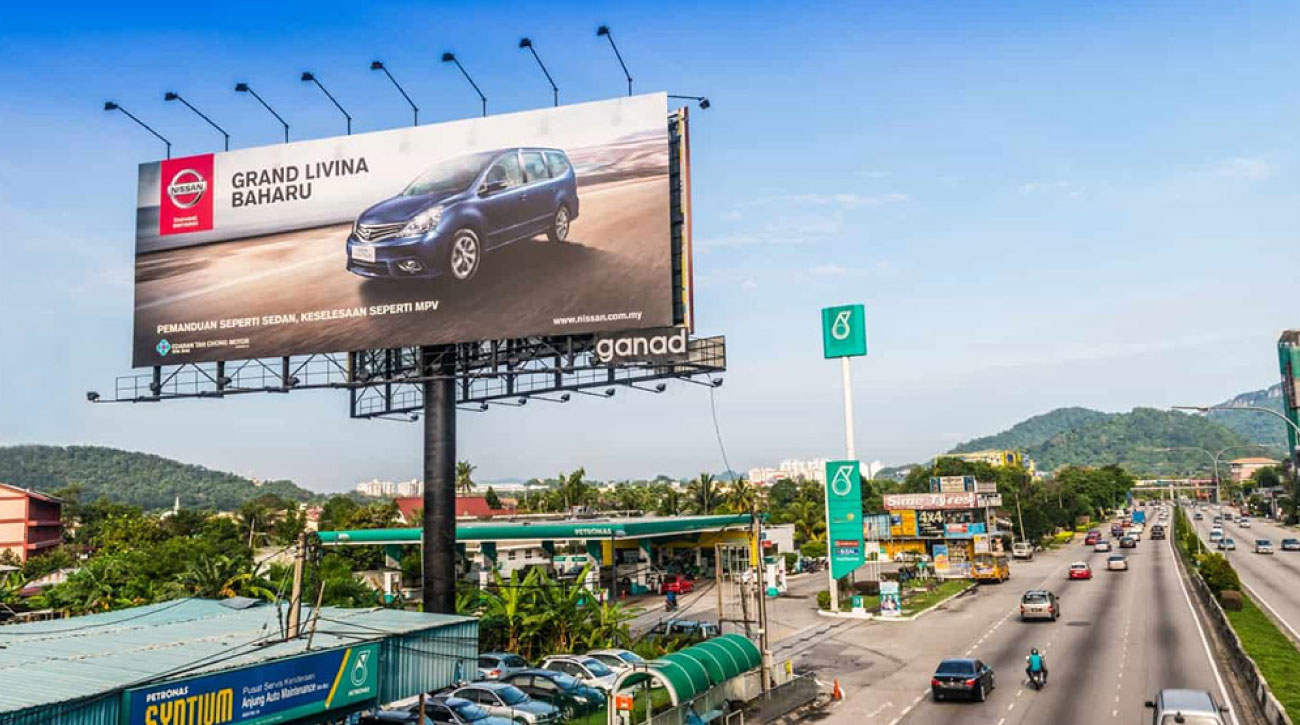
Traditional vs. Modern Marketing: A Battle or a Blend?
Marketing has transformed dramatically over the years. TV commercials, billboards, and print ads once dominated the landscape, but now YouTube ads, social media campaigns, and influencer marketing lead the way. Does this mean traditional marketing no longer matters?
Absolutely not! The most successful brands don’t see it as a battle—they embrace both traditional and digital marketing to create a seamless brand experience that maximises visibility, engagement, and conversions.
The Shift in Marketing Channels
Marketing tools and platforms have evolved significantly over time. Here’s how traditional marketing methods have transitioned into their digital counterparts:
Image source: Brandripe.com
TV Commercials → YouTube Ads
Television advertising remains a powerful tool for large-scale brand awareness campaigns. Brands use TV commercials to reach mass audiences with emotionally compelling storytelling. TV ads build trust, credibility, and memorability. However, YouTube ads have revolutionised video advertising by offering targeted reach, cost-effectiveness, and measurable results. With YouTube, brands track engagement, optimise campaigns in real time, and connect with niche audiences through personalised content. Additionally, skippable and non-skippable ad formats give advertisers flexibility in how they engage viewers.
Billboards → Digital Out Of Home (DOOH)
Billboards offer high visibility and strengthen brand recognition in key locations such as highways, city centres, and shopping districts. They effectively deliver broad messaging and establish brand dominance in specific areas. However, Digital Out of Home (DOOH) advertising takes it a step further by incorporating dynamic and interactive elements. DOOH includes digital billboards, LED screens in malls and transit hubs, and programmatic capabilities that allow brands to display real-time, location-based content. This technology enables marketers to change messaging instantly, track impressions, and even integrate mobile engagement through QR codes or geotargeted promotions.
Direct Mail → Email Marketing
Businesses once relied on direct mail campaigns, such as flyers and brochures, to engage potential customers at their doorstep. While still relevant in some industries, direct mail lacks the personalisation, speed, and measurable engagement of email marketing. Brands now use email marketing to create automated sequences, personalise messages based on user behaviour, and measure open rates, click-through rates, and conversion metrics. Email marketing platforms offer A/B testing, segmentation, and retargeting capabilities, making it a cost-effective approach to nurturing leads and strengthening customer relationships.
Print Ads → Google Display Network (GDN)
Print ads in newspapers and magazines once served as primary tools for reaching target audiences through editorial content and high circulation. However, the Google Display Network (GDN) has transformed advertising by allowing brands to place visual ads across millions of websites, mobile apps, and YouTube videos. Unlike print ads, GDN provides real-time tracking, audience segmentation, interactive formats, and retargeting options. Advertisers can use banner ads, rich media, and video ads to engage users at multiple touchpoints throughout their online journey, ensuring maximum reach and impact.
Cold Calls → Chatbots & DMs
Businesses traditionally relied on cold calling to generate leads and close sales. While some industries still use this method, many now turn to chatbots and direct messaging (DMs) on platforms like WhatsApp, Facebook Messenger, and Instagram to engage potential customers in a more natural and interactive way. AI-driven chatbots respond instantly, provide personalised recommendations, qualify leads, and offer 24/7 customer support. Direct messaging fosters real-time conversations, making it easier to address inquiries, resolve objections, and drive conversions without the interruption of an unsolicited phone call.
The Power of an Integrated Approach
The most successful brands today combine traditional and digital marketing to create a holistic strategy. Coca-Cola continues to invest in large-scale billboard advertising while running viral TikTok challenges to engage younger audiences. Nike produces high-quality TV commercials while leveraging influencer partnerships and user-generated content to expand its reach on social media.
Rather than choosing one approach over the other, brands should focus on where their audience is and build strategies that seamlessly blend both worlds. Traditional marketing establishes brand credibility, emotional connection, and widespread recognition, while digital marketing delivers precise targeting, measurable engagement, and real-time optimisation.
How Can Your Brand Leverage Both?
Effective marketing isn’t about picking sides—it’s about integrating the best of both approaches. Whether pairing print ads with a strong digital campaign, using TV ads to drive online engagement, or combining DOOH with mobile retargeting, the right balance helps brands maximise their impact.
Want to blend traditional and digital marketing for your business? Let’s create a strategy that works for you.
This article is written by Chee Fei, Co-Founder of Demojo Communication a.k.a. Marketing Sifu. From marketing tactics, brand strategy and creative storytelling, Chee Fei knows how to make marketing that matters. Follow him on TikTok and LinkedIn for all things marketing.




